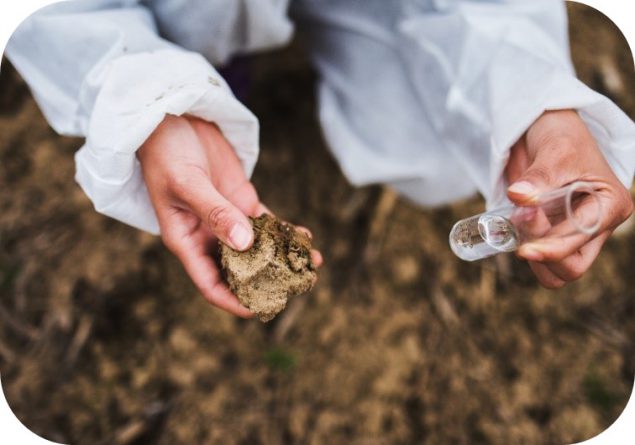PFAS Environmental Sampling

The Agency for Toxic Substances and Disease Registry (ATSDR), in coordination with the U.S. Environmental Protection Agency (EPA), conducted environmental sampling to evaluate nondrinking water sources of per- and polyfluoroalkyl substances (PFAS) exposure.
The environmental sampling was conducted at two of the ten PFAS exposure assessment (EA) locations: Westfield, Hampden County, MA and New Castle County, DE. This supplemental site work at EA sites may help us understand how the indoor and outdoor environment may be contributing to elevated levels of PFAS in people’s blood.

In 2019, the Centers for Disease Control (CDC) and the Agency for Toxic Substances and Disease Registry (ATSDR) conducted PFAS exposures assessments (EAs) in communities near current or former military bases and that are known to have had PFAS in their drinking water. The EAs measured levels of PFAS in blood and urine as well as tap water and indoor dust in some households.
The purpose of this supplemental PFAS environmental sampling exposure investigation (EI) was to collect additional environmental samples to learn more about exposures resulting from non-drinking water sources. This new environmental sampling will be used, along with blood samples collected during the EA in 2019, to learn more about non-drinking water sources of PFAS.
Households who participated in the PFAS EAs in Hampden County, MA and New Castle County, DE were eligible to participate in the PFAS environmental sampling. ATSDR sent invitation letters to all households that participated in the EA at these two locations, followed by a phone call to recruit participants. A total of 79 homes across the two sites participated in the environmental sampling.
Each household completed appropriate consent forms along with household and personal exposure questionnaires. A filtered dust sample was completed at all participants’ homes along with additional environmental samples taken in a subset of homes. The additional samples included:
- Indoor air
- Dust from their vacuum cleaner (to get a larger dust sample)
- Wet surface wipe samples
- Soil
- Personal exposure (measured with a silicon wristband)
Samples of outdoor air and locally-grown produce were also taken within the community. ATSDR did not collect additional blood or urine samples.
ATSDR and EPA are working on data analysis and will prepare reports summarizing the findings and conclusions of each site. The results may help individual participants better understand their non-drinking water exposure to PFAS.
For more information on the work CDC/ATSDR is doing to address PFAS exposure, please visit ATSDR’s PFAS website https://www.atsdr.cdc.gov/pfas/.
For other exposure assessment or PFAS-related questions, please email pfas@cdc.gov.